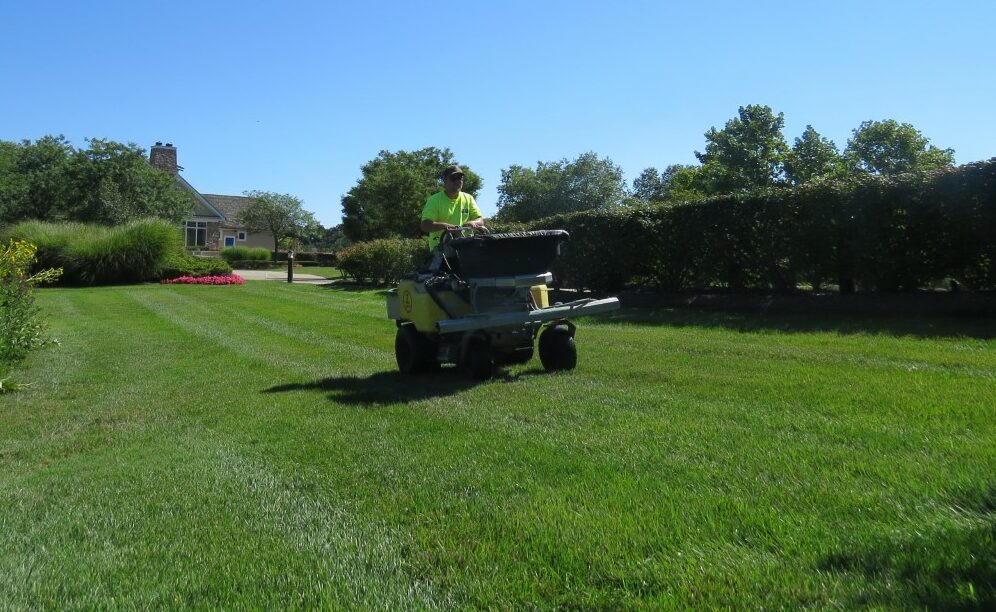
Unfortunately it’s that time of year again: the season of summer turf diseases. To make matters worse, most of these can masquerade as totally unrelated problems like irrigation issues or fertilizer burn. Here are a few of the most likely suspects and some tips and tricks to help identify what is going on with your grass.
Dollar Spot
Dollar Spot is a notorious summer disease in years where there are high day-time temperatures combined with cool night-time temperatures. It is a fungal disease that will activate when temperatures are between 59 and 88 degrees and when lower night-time temperatures produce morning dew/moist conditions at the grass blade but the soil itself remains mostly dry. Like the name would suggest, Dollar Spot creates quarter- to silver-dollar-sized spots in the turf. If you look closely, you can see that the crown of the grass is still green while the grass blade will have sections that are bleached-out with a darker brown edge. So what can be done? Nitrogen treatments (fertilization) help immensely and fungicides can also be used. Maintaining even (not too wet, not too dry) soil conditions can also help.
Phythium Blight
Phythium Blight is another summer disease that has larger spots (1″-6″) and is reddish-brown. In wet conditions like morning dew, the fungus itself can be seen as purple- or white-toned “fluff.” It is most active in really warm temperatures, between 85 and 95 degrees with evening temperatures above 68 and starts in wet areas where water may pool. Treatment includes making sure correct drainage is maintained and avoiding excessive irrigation or watering at night. Fungicides can be used as well to avoid spread of the disease, though water mitigation is the best first step.
Summer Patch
Summer Patch, predictably, occurs as temperatures increase in summer and has the largest spots of the three, from 6″ to 3 feet in diameter. The patches are yellow/bronze and several patches can join together to form larger areas of damage. Though the disease spreads most easily with soil temperatures above 70 degrees, infection can actually start sooner as soil temps reach 65 degrees consistently. Lawns with compacted, saturated soil will be the most effected, so maintaining even moisture levels and performing aerations in compacted lawns will help prevent the conditions the disease favors. Nitrogen fertilizer treatments are also key.




